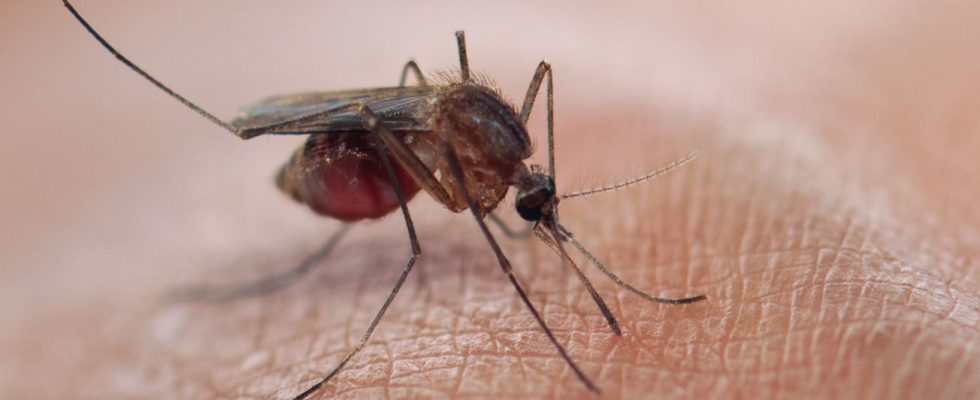Fever, body aches, headaches… These symptoms correspond to the flu, but also to a less well-known infection: the West Nile virus. The one also called “West Nile” was detected for the first time in Bordeaux (Gironde) on July 27. Until now, it had only been identified on “the Mediterranean rim, in the Provence-Alpes-Côte d’Azur and Occitanie regions”, has specified the Regional Health Agency (ARS) of New Aquitaine.
Four other cases are “under investigation” in Gironde. Fortunately, the state of health of the people concerned “does not inspire concern”, assured the ARS. But the unprecedented nature of the situation is enough to arouse some doubts. Should we be afraid of the West Nile virus? The Express takes stock.
A mild virus in the majority of cases
Nile virus is not new. Discovered in Uganda in 1937, it was diagnosed for the first time in France in the 1960s. “It is carried by wild birds”, explains to L’Express Hervé Fleury, professor of virology at the University of Bordeaux and author of Emerging and re-emerging viruses. Mosquitoes bite infected birds and then transmit the virus by biting other living things, especially horses and humans. The “West Nile” then circulates in the blood. It is not transmissible from person to person, which slows its spread.
In the overwhelming majority of cases, this virus is mild. 80% of those affected do not even develop symptoms. “For the remaining 20%, it looks like a little flu,” says Hervé Fleury. Or: fever after a few days of incubation, muscle aches, headaches, sometimes accompanied by a rash and nausea. The patient recovers soon after. Unfortunately, serious forms can be developed in 1% of cases. They then lead to neurological complications, such as meningitis and encephalitis, which can lead to death.
Growing in Europe
At first glance, the risk associated with West Nile virus appears limited. It is rarely fatal and its mode of transmission makes its spread slower: “Mosquitoes cannot contaminate several humans or horses in a row”, assures Hervé Fleury. “They are forced to go and get supplies from an infected bird.” But even with this feature, “West Nile” cases are on the rise.
In Europe, contaminations have been on the rise since 2010, estimates Public Health France. The infection was first reported in Germany and the Netherlands in 2019 and 2020. Its appearance in new areas, such as Gironde, raises questions. The “West Nile” is currently transmitted by the Culex mosquito. It is the predominant mosquito in France, which bites mainly during the evening and at night. “But it would seem that tiger mosquitoes are also able to transport the virus”, advances to L’Express Louis Lambrechts, head of the virus-insect interactions unit at the Institut Pasteur.
This is only a hypothesis for now. But if tiger mosquitoes also begin to circulate the “West Nile”, “the danger will increase”, adds Hervé Fleury. Because, unlike the Culex, they sting all day long. They could therefore generate more cases, which increases the probability of facing serious forms. Gold: Currently, no treatment has been developed for West Nile virus. No vaccine – apart from one for horses – has been approved.
“We should not be alarmed, the ‘West Nile’ will not become public enemy number one”, nuance Louis Lambrechts. “But it shouldn’t be ignored either. The upsurge in cases and the spread to new areas are clues that the situation may be changing,” especially when it comes to modes of transmission. In the meantime, Public Health France recommends trying to protect yourself by using mosquito nets and skin repellents. Because the only way to avoid the “West Nile” remains… to avoid mosquitoes.
